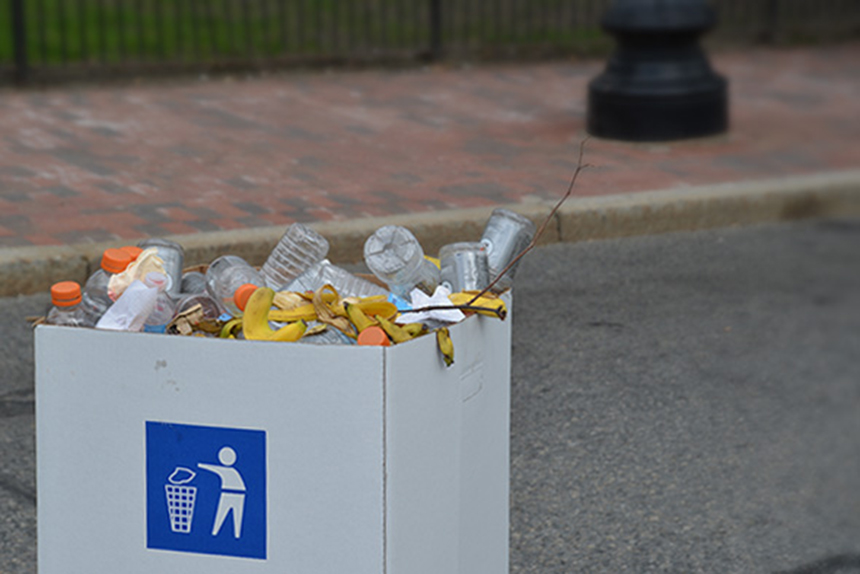Electronics Create Growing Amounts of Toxic Waste
March 2, 2010
Two of the biggest problems facing the waste and recycling industry today are electronics and construction debris. These materials present a number of difficulties to haulers, processors and recyclers because of the presence of toxic chemicals and substances.
Electronic waste — more commonly referred to as e-waste — includes computers, monitors, TVs, cell phones, refrigerators and just about any other electronic device that is thrown away. These items contain chemicals and heavy metals such as lead, cadmium, beryllium and brominated flame retardants, especially in the case of old computer monitors, which feature cathode ray tubes (CRTs).
Most of these items can be broken down into their component parts, but this is normally achieved through active disassembly by hand, which allows for the recognition and removal of useful components such as modems and RAM chips. However, this hands-on process is labor intensive and not economically viable.
This, in most cases, leads to these unwanted electronic products being shipped to poorer countries, with generally lax worker safety and health standards. Some of the materials recovered are gold, lead, copper, many types of plastics and glass. But among the side effects of this processing includes tainted groundwater, and increased cancer and birth defect rates.
An estimated 70 percent of all heavy metal contamination in U.S. landfills comes from discarded electronics, according to the Environmental Protection Agency.
Low initial cost, planned obsolescence and technological evolution are the main contributing factors to the increase in e-waste during the past 10 years. Most people would rather buy a new laptop when theirs breaks, malfunctions or becomes unable to support updated software, than ship that laptop out for repair or an upgrade. This attitude of electronic disposability has also led to the virtual death of industries such as television and appliance repair.
The Rhode Island Resource Recovery Corporation, which operates the Central Landfill in Johnston, accepts, free of charge for Rhode Island residents, computers, monitors, hard drives, modems, scanners, laptops, printers and TVs for recycling.
Unacceptable items include cell phones, printer cartridges, small appliances, servers and stereo equipment. Businesses with fewer than 15 complete computer systems can drop them off at Resource Recovery. The agency charges 20 cents per pound to dispose of these items .
There also are several recyclers of computers and CRTs in southern New England, and many manufacturers have trade in programs for electronics, and retailers, such as Best Buy, accept products they have sold, free of charge, for recycling.
Construction and demolition debris poses other problems for the waste/recycling industry. Materials taken from older buildings often contain lead and asbestos, newer buildings have drywall that, when landfilled, releases a toxin called hydrogen sulfide, and fluorescent lighting contains mercury.
At the Rhode Island Resource Recovery Corporation, this debris is processed into a mulch-like material that is used as a part of the daily landfill cover. Bricks, clean wood, drywall, shingles, furniture and rubber are used to make this landfill cover. Grinding these and other materials, such as glass, produces a nonporous cover that restricts airflow, reduces odors and saves valuable space.
Many construction companies practice reclamation — carefully disassembling buildings with an eye for saving materials that can be used on other projects or sold. This process is especially fruitful, financially, when the materials can be reused on the same job.
Some alternatives to disposal of construction and demolition waste are: sorting scrap metal and wire for resale through independent recyclers; sorting large or whole pieces of drywall for recycling at the state landfill; donating salvaged materials to Habitat for Humanity or other community construction organizations; and listing reusable items such as fixtures on Freecycle, Craigslist or other similar Web sites.
While e-waste is a growing problem at landfills across the country, construction and demolition debris, especially from larger projects, is usually sorted and recycled. Small to midsized projects taken on by homeowners, however, create a vast amount of possibly hazardous waste.
The key to handling debris from home improvement projects is to have a plan. Before you begin your project, try to think of what kinds of waste materials will be created, then find out how and where to dispose of them properly.
Categories
Join the Discussion
View CommentsYour support keeps our reporters on the environmental beat.
Reader support is at the core of our nonprofit news model. Together, we can keep the environment in the headlines.
We use cookies to improve your experience and deliver personalized content. View Cookie Settings



